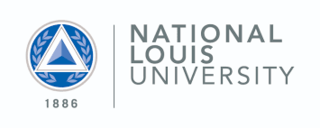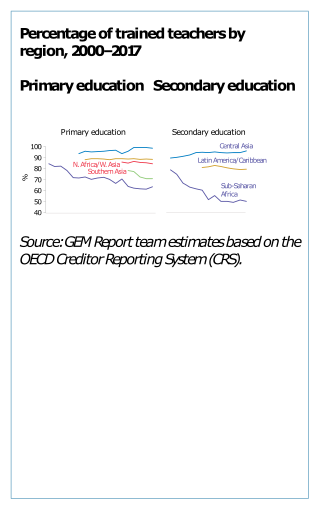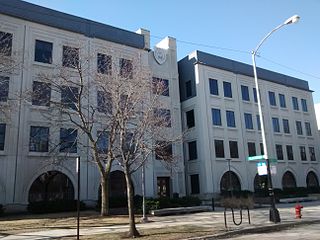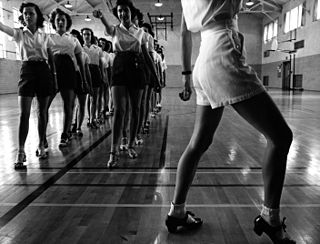Humanistic education is an approach to education based on the work of humanistic psychologists, most notably Abraham Maslow and Carl Rogers. Rogers is regarded as the founder of humanistic psychology and devoted much of his efforts toward applying the results of his psychological research to person-centered teaching where empathy, caring about students, and genuineness on the part of the learning facilitator were found to be the key traits of the most effective teachers. He edited a series of books dealing with humanistic education in his "Studies of the Person Series," which included his book, Freedom to Learn and Learning to Feel - Feeling to Learn - Humanistic Education for the Whole Man, by Harold C. Lyon, Jr. In the 1970s the term "humanistic education" became less popular after conservative groups equated it with "Secular Humanism" and attacked the writings of Harold Lyon as being anti-Christian. That began a successful effort by Aspy, Lyon, Rogers, and others to re-label it "person-centered teaching", replacing the term "humanistic education." In a more general sense the term includes the work of other humanistic pedagogues, such as Rudolf Steiner, and Maria Montessori. All of these approaches seek to engage the "whole person": the intellect, feeling life, social capacities, and artistic and practical skills are all important focuses for growth and development. Important objectives include developing children's self-esteem, their ability to set and achieve appropriate goals, and their development toward full autonomy.

Judy Chicago is an American feminist artist, art educator, and writer known for her large collaborative art installation pieces about birth and creation images, which examine the role of women in history and culture. During the 1970s, Chicago founded the first feminist art program in the United States at California State University, Fresno, which acted as a catalyst for feminist art and art education during the 1970s. Her inclusion in hundreds of publications in various areas of the world showcases her influence in the worldwide art community. Many of her books have also been published in other countries, making her work more accessible to international readers. Chicago's work incorporates a variety of artistic skills, such as needlework, counterbalanced with skills such as welding and pyrotechnics. Her most well-known work is The Dinner Party, which is permanently installed in the Elizabeth A. Sackler Center for Feminist Art at the Brooklyn Museum. The Dinner Party celebrates the accomplishments of women throughout history and is widely regarded as the first epic feminist artwork. Other notable art projects by Chicago include International Honor Quilt, Birth Project, Powerplay, and The Holocaust Project. She is represented by Jessica Silverman gallery.
The Doctor of Education is a research or professional doctoral degree that focuses on the field of education. It prepares the holder for academic, research, administrative, clinical, or professional positions in educational, civil, private organizations, or public institutions. Considerable differences exist in structure, content and aims between regions.
Experiential education is a philosophy of education that describes the process that occurs between a teacher and student that infuses direct experience with the learning environment and content. This concept is distinct from experiential learning, however experiential learning is a subfield and operates under the methodologies associated with experiential education. The Association for Experiential Education regards experiential education as "a philosophy that informs many methodologies in which educators purposefully engage with learners in direct experience and focused reflection in order to increase knowledge, develop skills, clarify values, and develop people's capacity to contribute to their communities". The Journal of Experiential Education publishes peer-reviewed empirical and theoretical academic research within the field.
Philosophy for Children, sometimes abbreviated to P4C, is a movement that aims to teach reasoning and argumentative skills to children. There are also related methods sometimes called "Philosophy for Young People" or "Philosophy for Kids". Often the hope is that this will be a key influential move towards a more democratic form of democracy. However, there is also a long tradition within higher education of developing alternative methods for teaching philosophy both in schools and colleges.

Music education is a field of practice in which educators are trained for careers as elementary or secondary music teachers, school or music conservatory ensemble directors. Music education is also a research area in which scholars do original research on ways of teaching and learning music. Music education scholars publish their findings in peer-reviewed journals, and teach undergraduate and graduate education students at university education or music schools, who are training to become music teachers.

Visual arts education is the area of learning that is based upon the kind of art that one can see, visual arts—drawing, painting, sculpture, printmaking, and design in jewelry, pottery, weaving, fabrics, etc. and design applied to more practical fields such as commercial graphics and home furnishings. Contemporary topics include photography, video, film, design, and computer art. Art education may focus on students creating art, on learning to criticize or appreciate art, or some combination of the two.

National Louis University (NLU) is a private nonprofit university with its main campus in Chicago, Illinois. NLU enrolls undergraduate and graduate students in more than 60 programs across its four colleges. It has locations throughout the Chicago metropolitan area as well as a regional campus in Tampa, Florida, where it serves students from 13 counties in that state’s central region.
The Master of Education is a master's degree awarded by universities in many countries. This degree in education often includes the following majors: curriculum and instruction, counseling, school psychology, and administration. It is often conferred for educators advancing in their field. Similar degrees include the Master of Arts in Education and the Master of Science in Education.

Teacher education or teacher training refers to programs, policies, procedures, and provision designed to equip (prospective) teachers with the knowledge, attitudes, behaviors, approaches, methodologies and skills they require to perform their tasks effectively in the classroom, school, and wider community. The professionals who engage in training the prospective teachers are called teacher educators.
Education in the performing arts is a key part of many primary and secondary education curricula and is also available as a specialisation at the tertiary level. The performing arts, which include, but are not limited to dance, music and theatre, are key elements of culture and engage participants at a number of levels.
Arts integration differs from traditional education by its inclusion of both the arts discipline and a traditional subject as part of learning The goal of arts integration is to increase knowledge of a general subject area while concurrently fostering a greater understanding and appreciation of the fine and performing arts. The John F. Kennedy Center for the Performing Arts defines arts integration as "an approach to teaching in which students construct and demonstrate understanding through an art form. Students engage in a creative process which connects an art form and another subject and meets evolving objectives in both."

Art Education in the United States refers to the practice of teaching art in American public schools. Before the democratization of education, particularly as promoted by educational philosopher John Dewey, apprenticeship was the traditional route for attaining an education in art. Alongside John Dewey, Elliot Eisner was a leading advocate for the inclusion of art in modern curriculum. Since the first introduction of art in public schooling in 1821, art education in the United States has faced many changes and many stages of growth.

The University of Chicago Graham School of Continuing Liberal and Professional Studies is one of eight professionals schools of the University of Chicago. The Graham School's focus is on part-time and flexible programs of study.

The classical education movement or renewal advocates for a return to a traditional European education based on the liberal arts, the Western canons of classical literature, the fine arts, and the history of Western civilization. It focuses on human formation and paideia with an early emphasis on music, gymnastics, recitation, imitation, and grammar. Multiple organizations support classical education in charter schools, in independent faith-based schools, and in home education. This movement has inspired several graduate programs and colleges as well as a new peer-reviewed journal, Principia: A Journal of Classical Education.

Dance education is a practice whereby students are taught a broad understanding of dance as a form of art and who are trained professionally in many different genres of dance. Dance education consists of specialized dancers who conduct original research for teaching others how to dance. Currently, dance itself is considered an allied form of art and music, thus dance in formal education is closely knit with these disciplines.
Dalcroze eurhythmics, also known as the Dalcroze method or simply eurhythmics, is a developmental approach to music education. Eurhythmics was developed in the early 20th century by Swiss musician and educator Émile Jaques-Dalcroze and has influenced later music education methods, including the Kodály method, Orff Schulwerk and Suzuki Method. Dalcroze Eurhythmics teaches concepts of rhythm, structure, and musical expression through movement. This focus on body-based learning is the concept for which Dalcroze Eurhythmics is best known. It focuses on allowing the student to gain physical awareness and experience of music through training that takes place through all of the senses, particularly kinesthetic.
Feminist pedagogy is a pedagogical framework grounded in feminist theory. It embraces a set of epistemological theories, teaching strategies, approaches to content, classroom practices, and teacher-student relationships. Feminist pedagogy, along with other kinds of progressive and critical pedagogy, considers knowledge to be socially constructed.

Educational management refers to the administration of the education system in which a group combines human and material resources to supervise, plan, strategise, and implement structures to execute an education system. Education is the equipping of knowledge, skills, values, beliefs, habits, and attitudes with learning experiences. The education system is an ecosystem of professionals in educational institutions, such as government ministries, unions, statutory boards, agencies, and schools. The education system consists of political heads, principals, teaching staff, non-teaching staff, administrative personnel and other educational professionals working together to enrich and enhance. At all levels of the educational ecosystem, management is required; management involves the planning, organising, implementation, review, evaluation, and integration of an institution. Research in educational management should explore the dynamic interplay among educational leaders, their followers, and the broader community to enhance the quality of teaching and learning outcomes.
In the United States, disciplinary literacy is the teaching of literacy within the defined disciplines of mathematics, science, English-language arts, and social studies. This process is defined as "the use of reading, rereading, investigating, speaking, and writing required to learn and form complex content knowledge appropriate to a particular discipline". Through the practices of disciplinary literacy, educators are to present content using real-world examples and connections, and do so in such a way as to accurately incorporate and exemplify the everyday lives of all students, regardless of race, gender, socioeconomic status, etc. As such, students are coached to become experts in each disciplinary field; that is, students are encouraged and expected to acquire and use skills, during reading, that professionals in each of the disciplines themselves are using. To note, disciplinary literacy does not demand reading skills be taught during instruction of various content areas, there is still some crossover, with the need to incorporate some reading skills, such as vocabulary instruction.










